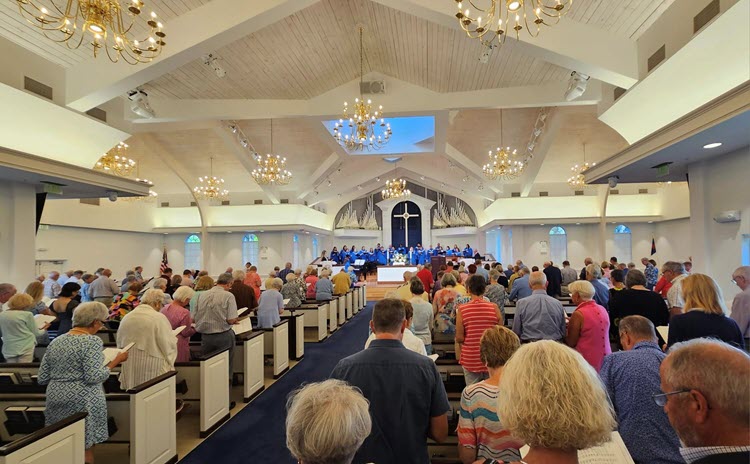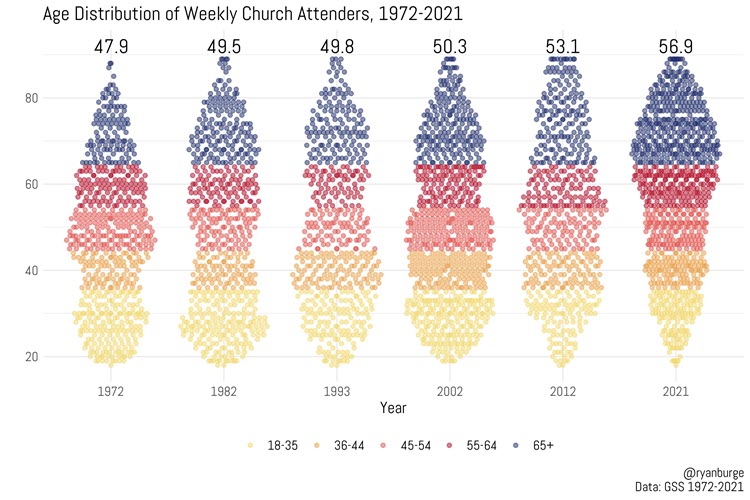Have you ever looked around a sacred space during worship and observed that those gathered look quite a bit older than the general population? If so, your anecdotal observation is linked to a broader reality: The average American in worship is significantly older than the average American across the entire population. And, it is also correct to assert that while the both the worshipping folks and Americans in general are aging populations, the average age among the worshipping group has risen more rapidly than in the population at large.

This is a topic I’ve explored over the years a number of times using data from a variety of then new sources, including
- Giving Up the Old and White Church (March 2021)
- Mainline Protestantism = Old (July 2016)
- From Mainline to Sideline to Oldline (February 2015)
- Doubling of Those Age 65 & Over (April 2013)
Greying of the Pews
A few weeks ago Ryan Burge created an infographic that shows the age distribution of weekly worship attenders over the last 50 years based on data from the General Social Survey (GSS)

The average age of someone who worships on a weekly basis increased from 47.9 to 56.9 between 1972 and 2021, which is an increase of 18.79%. By comparison, the average American adult increased in age from 43.8 to 48 over the same time period, which is an increase of 9.59%.
So What?
Plenty of people are concerned by the rapidly aging American population and the many challenges this presents. For the 25 years I’ve been in ministry, Christian leaders have been troubled both by the aging population of faithful adherents as well as the percentage of this cohort that are 65 years of age or older.
Even a quick comparison of the decade by decade progression of aging as depicted in Burge’s infographic should also raise concerns about the rapid decline in the percentage of weekly worshippers who are in the youngest years of adulthood.
Provided the current trend continues (and there is no compelling evidence to suggest a different path is more likely), it is reasonable to expect more changes in the American religious landscape in the next few decades than any time since the 1970s, including increases to rates of congregations that permanently close their doors and cease their operations.
Bonus
Check out some additional So What Faith posts that utilize Ryan Burge’s statistical analysis and/or observations
- Am I Living in the Most Protestant Place in America? (July 2023)
- My Religious Traditions Are Missing 8 Million People! (June 2023)
- End of Presbyterianism: Farewell PC(USA)? (May 2023)
- Top 10 Books of 2022 [featuring his book, 20 Myths About Religion and Politics in America.] (December 2022)
- Mainline Decline: 1990 to 2020 (May 2022)
- Lifelong Retention: A Religious Challenge (March 2022)